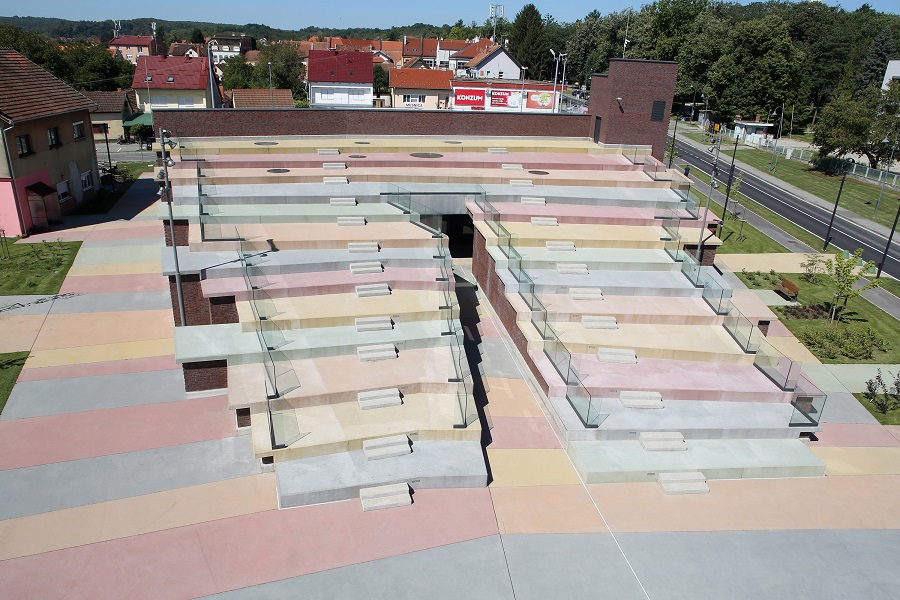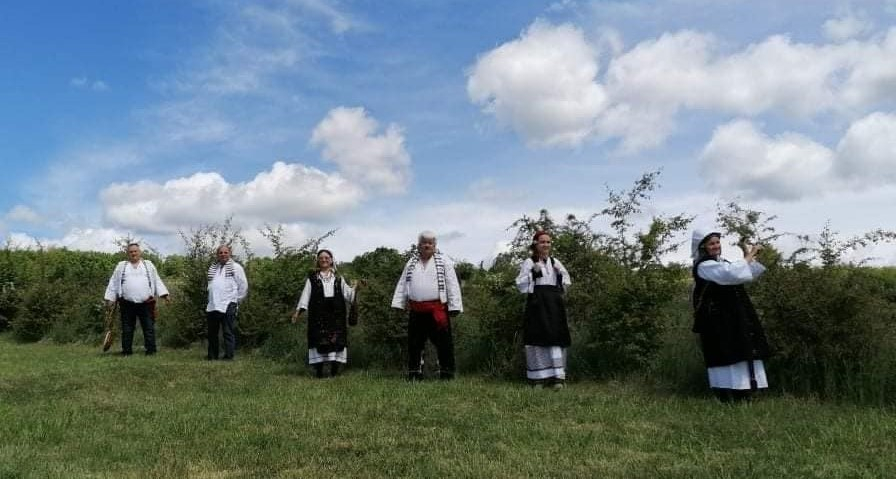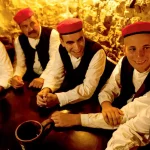November 7, 2020 – Protected by UNESCO, the unmistakable Slavonian folk song style will get deserved attention at the new Museum of Becarac in Pleternica.
There are lots of pretty little towns in Slavonia like Pleternica. The average outsider often has no way of distinguishing between them. But, Pleternica is determined to stand out. In a smart and considered move, they’ve decided to become synonymous with a UNESCO-protected element of Slavonian and Croatian culture – Bećarac.
Last year, Bećarac Square was opened in Pleternica. Soon, the town will become home to another symbol of heritage preservation – the Museum of Becarac. The Museum of Becarac will be located right next to Bećarac Square in the center of the town.
Bećarac is a traditional and humorous type of folk song originally from Slavonia. It has an unmistakable sound. It is characterised by a rhyming, call-and-response type of delivery and is performed acapella or accompanied by the traditional Slavonian folk music style of tamburitza. The melody of Bećaraci remains constant, only the song words differ as it continues or is again performed. In this way, Bećarac is more akin to the traditional storytelling aspect of folk music than it is an individual song.
The first verse is sung by the choir leader and forms a logical thesis; it is repeated by the choir of gathered men. The second verse is a humorous antithesis, also repeated by the choir (but often broken by laughter). Bećarci is usually performed at the peak of a party as a drinking song after the crowd is sufficiently warmed up by wine and music. A series of bećarci can last indefinitely. Their words are often made up spontaneously. The creator of the lines of lyrics can draw on many different sources of inspiration – recent happenings, local stories, reputations, past songs and much more. The style is embraced by almost every band who you will ever hear play tamburitza music – young, old, traditional, or modern. Thus, the subject matter and language used can vary greatly, as does the appeal of the humour and the lyrics. If a writer creates a popular motif, it can be remembered, repeated and even replied to at later instances. It may travel outside of its source of origin in the same way traditional folk music always has.
Bećarac was declared an intangible part of cultural heritage by UNESCO in 2011. The name bećarac comes from the word bećar, meaning reveller, and the word is often used to describe young Slavonian bachelors.
Museum of Becarac to present Slavonian heritage in a modern way
As Požeški vodič reports, the Museum of Becarac project was presented at the beginning of 2020. The 1400 square meters that the Museum of Becarac will occupy has already been designated during the construction of Bećarac Square.
Below the stands of the square, it is planned to house a souvenir shop and a cafe. The Museum of Becarac itself will be built on two floors. The first is already visible when you walk through the passage under the stands. The larger part of the museum will be located underground, in the basement space. The museum is expected to open at the end of 2021.

Bećarac Square in the center of Pleternica, under whose stands the Museum of Bećarac will be located, is designed as a reminiscence of golden Slavonian fields and sunny hills / D. Fabijanić, The City of Pleternica
“The Museum of Bećarac will be a presentation of heritage with all modern techniques: music, video, and visual recordings, and at some point, you will even have the feeling that you are running through wheat fields,” said Antonija Jozić, the Mayor of Pleternica.
Apart from Slavonia, the Croatian regions of Baranja and Srijem are also home to bećarac, and it belongs to them equally. Furthermore, it is also performed in parts of southern Hungary and Vojvodina. It is a part of traditional culture throughout much of the Pannonian Basin. Like its UNESCO protection, its continued performances seek to preserve a special Slavonian tradition. This dedicated museum will also contribute to doing just that.
“Folk costumes and other objects will be exhibited in the museum, too, because it is very important, but we will use other methods to contextualize these objects. First of all, this is not a museum of folk costumes, but a museum of folk song bećarac. And it is performed. So we have to figure out how bećarac will be in focus all the time, but then we will, of course, talk about other anthropological, ethnographic, and historical phenomena related to bećarac,” explained Dragana Lucija Ratković Aydemir, founder and director of Muza company which participated in the presentation of the museum project on January 13, 2020.
The Museum of Bećarac is part of a large project called “Svijet graševine” (The world of graševina), which is being carried out by the City of Pakrac, with the City of Pleternica as one of the partners. Out of the total 65.7 million kuna of the project, 30 million kuna is intended for the Museum of Bećarac, while the rest is intended for the City of Pakrac’s “Spahijski podrum” project and branding.
The rich city cultural treasury
The Museum of Bećarac is designed as an extension of the tourist offer of the small Slavonian town. Pleternica has about 11,000 inhabitants, but every year, one event attracts as many as 100,000 pilgrims there. It is the Novena of Our Lady of Tears, whose sanctuary is located in the heart of Pleternica and for which the city of Pleternica is otherwise known. It is held every year from 23 to 31 August.
The June Days of Amateur Creativity called LIDAS are also important for Pleternica, during which the splendor of the cultural treasury of this region is presented. The children’s tamburitza festival “Cvjetići glazbe” (Flowers of Music) is held on those days and is the only one of its kind in Croatia. Due to the parish church of Sv. Nicholas, who is the patron saint of the city, Pleternica City Day is celebrated each year on December 6th.
Pleternica has been looking for a “trigger” for a long time to help them attract even more tourists, and they finally recognized it in bećarac.
“Many years ago, at the suggestion of one of my fellow citizens, we protected the name of the Museum of Bećarac at the Intellectual Property Office because we felt that it could be a good story that would bring tourists to Pleternica. As European funds were available to us, we developed the project and, now we are in the phase of completing equipping the museum. I believe that from the end of next year we will be able to count the tourists who will come to Pleternica,” the mayor Jozić told Večernji list.
An interpretation center rather than a museum
The museum currently produces all video and audio materials, applications, art installations, and procures all exhibits, and to consistently convey the spirit of Slavonian tradition to visitors, preparations by museologists, experts, and ethnologists are indispensable.
“The museum we are working on is not a classic museum, it is more of an interpretation center, that is, a visitor center. We will show all tourists who come what bećarac is and what Slavonian life is. And then, of course, when they visit the museum, we hope that they will visit all our other beauties, from wine roads and cellars to family farms,” says Antonija Jozić.










